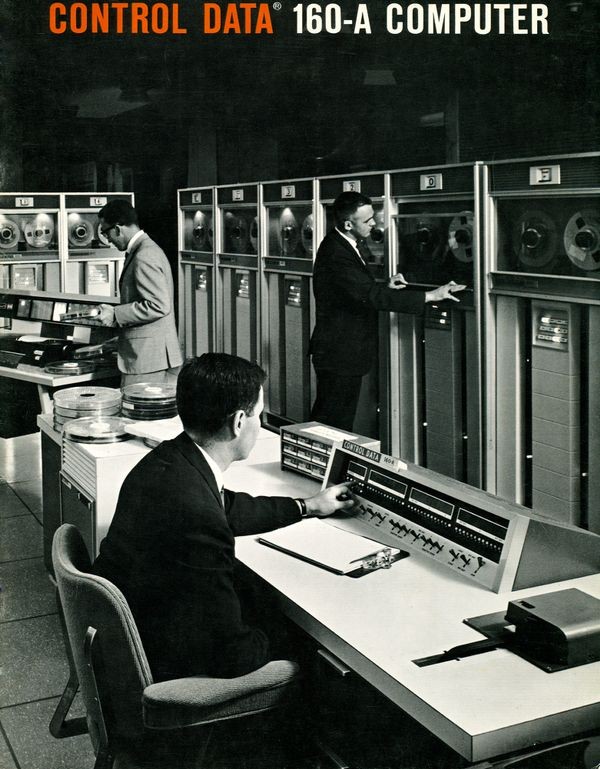The Birth of the Minicomputer?
CDC-160A
Originally designed to solve a problem with input and output on CDC’s first large computer, the little 160 was later modified and sold as a separate product, the 160A. It proved quite successful in control applications. More than 400 were made.
The Birth of the Minicomputer?
Control Data Corporation had a problem. The CDC 1604 scientific computer, designed by Seymour Cray, sat idle much of the time waiting for slow input and output devices that handled punched cards and paper tape. Customers who had paid the fledgling company about $1,000,000 per machine weren’t pleased.
So Cray designed the CDC 160, a simple $60,000 computer that offloaded input/output tasks, freeing the big computer to focus on number crunching. In doing so he demonstrated to future minicomputer designers how to design a fast, effective, low-cost computer.
New York Stock Exchange trading floor
Before Quotron, a broker didn’t know the last stock sale price unless it was on the office’s Teleregister Board, or he had watched the ticker tape. Quotron terminals immediately gave brokers the latest price of any stock.
View Artifact DetailQuotron Terminals information sheet
John Scantlin used the CDC 160A in 1962 to provide online quotations from the New York Stock Exchange to brokers across the country. Scantlin Electronic’s Quotron II system provided the latest stock prices within about 15 seconds.
View Artifact DetailWhy Was the CDC 160 So Cheap?
Several design features reduced cost by minimizing the number of logic circuits needed. It had only a small set of basic machine instructions. Cray used a 12-bit word length (unlike the 18 or 24 bits of other machines). And there was just one internal data storage register; all other data was stored in cheap magnetic core main memory.
By using the same kind of logic and memory as the 1604, the machine remained fast despite these simplifications.
Seymour Cray
Seymour Cray is best known for building supercomputers, but he also designed the CDC 160, one of the first minicomputers.
View Artifact Detail






